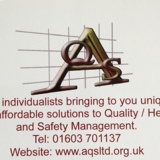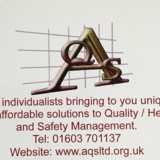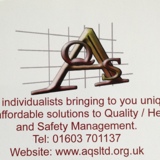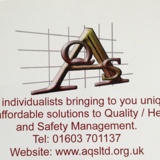Information
-
Audit Title
-
Document No.
-
Client / Site
-
Conducted on
-
Prepared by
-
Location
-
Personnel
-
Background
The Regulatory Reform (Fire Safety) Order 2005 introduced a new approach towards fire safety risk assessment. The radical overhaul of fire safety by the Government resulted in over sixty sets of fire safety laws being consolidated into a single piece of Legislation.
The Government's aim was to introduce a new, simpler fire safety regime for England, Scotland and Wales under which FIre Authorities could validate fire safety measures taken by an employer, owner or occupier in high risk premises.
A new duty of care would be placed on the 'responsible person', who might be an employer in the case of a workplace, requiring them to provide and maintain adequate fire precautions. The responsible person would be required to carry out an assessment of the fire risks in the premises and ensure that hey meet satisfactory fire standards. -
Important Note:
Although the Consultant has exercised all due diligence in the inspection of your premises and in the preparation of this report, there may be matters that were not taking place at the time of the visit or that occur and our Consultant was not informed of those matters. You should, therefore, carefully consider this report in its entirety to satisfy yourself that the main fire hazards and risks associated with your business have been covered.
The purpose of this report is to provide an assessment of e risk to life from fire in these premises and, where appropriate, to make recommendations to ensure compliance with fire safety legislation.
This report does not address the risk to property or business continuity from fire.
The following is your risk assessment.
The assessment must be reviewed/updated if circumstances change, new information becomes available that makes it no longer valid or the recommended additional control measures are implemented.
Where your control measures were found to be adequate you must monitor and maintain those measures to ensure conditions do not deteriorate.
In any event it should be reviewed annually.
Part 1: GENERAL INFORMATION
1 The Building/s
-
Number of Floors / Buildings
- 1
- 2
- 3
- 4
- 5
- 6
- 7
- 8
- 9
- 10
-
Occupancy type:
-
Floor area: (m2 per floor) (per building)
-
Floor area: (m2 total)
-
Brief details of construction per building:
-
Structural features likely to promote rapid spread of fire and smoke?
2 The responsible person for fire safety
-
Contact details of responsible person
-
Details of the competent person
3 The occupants
-
Maximum number of occupants:
-
Maximum number of occupants at any given time:
-
Maximum number of members of the public at one time:
4 Persons at special risk
-
Are children employed at the premises?
-
Are there sleeping occupants?
-
Are there disabled occupants?
-
Are there any residential properties in or attached to the building
-
Are there persons in remote areas?
-
Are there lone workers?
-
Are there persons working in particularly hazardous areas or carrying out hazardous tasks?
-
Overall evaluation of risk to persons on site?
5 Previous fire loss experience
-
Is there any previous history of fire loss in the premises (if yes give details)
6 Other relevant background
-
Is there a prohibition notice in force? (if yes give date of issue)
-
Is there an alteration notice in force? (if yes give date of issue)
-
Is there an enforcement notice in force? (if yes give date of issue and date of when work is to be completed by)
Part 2: FIRE HAZARDS AND ELIMINATION OR CONTROL
7 Electrical sources of ignition
-
Is there a suitable policy about the use of personal electrical appliances?
-
Quantify electrics per floor / building
-
Are reasonable measures taken to prevent fires of electrical origin?
-
Is the fixed wiring installation periodically tested and inspected?
-
Are portable appliances tested/inspected and records maintained?
-
Are RCD's fitted?
-
Is there a suitable limitation on the use of trailing leads and adapters?
-
Is Luminous Discharge Lighting installed? (if yes does the installation meet with current standards)
-
Overall evaluation of risk category?
8 Other significant ignition sources that warrant consideration
-
Is the use of portable heaters avoided as far as reasonably practicable?
-
List other ignition sources:
9 Portable heaters and heating installation
-
If portable heaters are used, are the more hazardous types (radiant bars and LPG) avoided?
-
If portable heaters are used are suitable measures taken to minimise the risk of ignition of combustible materials?
-
Are fixed heating installations subject to regular maintenance?
-
Overall evaluation of portable heaters in use?
10 Housekeeping encompassing: Sources of Fuel and Oxygen
-
Flammables adequately controlled?
-
Flammable gases adequately controlled?
-
Flammable / explosive dust is adequately controlled?
-
Oxidising chemicals / oxygen cylinders / distribution systems adequately controlled?
-
Packaging materials adequately controlled?
-
Paper and card adequately controlled?
-
Plastics, rubber and foam adequately controlled?
-
Timber/wood adequately controlled?
-
Waste materials adequately controlled?
-
Combustible materials separated from ignition sources?
-
Natural airflow does not pose an increased risk?
-
Mechanical air conditioning / handling systems contain features to reduce risk?
-
Is the standard of housekeeping adequate?
-
Overall evaluation of risk category?
11 Cooking facilities
-
Are reasonable measures taken to prevent cooking fires?
-
Are filters changed and ductwork cleaned regularly?
-
Overall evaluation of cooking equipment?
-
Are suitable extinguishers available?
-
Overall evaluation of risk category?
12 Smoking
-
Are reasonable measures taken to prevent fires as a result of smoking?
-
Is smoking prohibited in the building?
-
Is smoking permitted in appropriate areas?
-
Are there suitable arrangements made for those who wish to smoke?
-
Is there absence of any evidence of breaches of smoking policy?
-
Is the appropriate smoking prohibition notice displayed at the building's entrance?
-
Overall evaluation of risk category?
13 Arson
-
Does the basic security against arson appear reasonable?
-
Is there sufficient control of unnecessary fire load in close proximity to the building or available for ignition by outsiders?
-
Overall evaluation of risk category?
14 Lightning
15 Hazards introduced by contractors and building works
-
Does the building have lightning protection system if required? (if yes has it been tested and are records of testing kept)
-
Is there sufficient control over works by contractors (e.g. Permits to work & hot works permits)?
-
Are there arrangements for the safe storage of gas bottles and others hazardous materials
-
Are fire safety conditions and instructions communicated to contractors?
-
Overall evaluation of risk category?
Part 3: FIRE PROTECTION MEASURES
16 Means of escape
-
Is the building provided with adequate means of escape in case of fire?
-
Are there sufficient exits?
-
Are exits easily and immediately openable where necessary?
-
Do fire exits open in the direction of travel where necessary?
-
Have sliding or revolving doors been avoided as fire exits?
-
Are there adequate means of securing exits?
-
Are there reasonable distances of travel where there is a single direction of travel?
-
Are there reasonable distances of travel where there are alternative means of escape?
-
Are escape routes adequately protected?
-
Are there suitable fire precautions for all inner rooms?
-
Are escape routes unobstructed?
-
Are there suitable means of escape for disabled occupants?
-
Overall evaluation of risk category?
17 Measures to limit fire spread and development.
-
Is there a sufficient standard of compartmentation and sub-compartmentation?
-
Are linings that promote fire spread avoided as far as reasonably practicable?
-
Fire Doors - Self closing, fit flush with door frame?
-
Overall evaluation of risk category?
18 Escape lighting
-
Is there a reasonable standard of escape lighting provided?
19 Fire safety signs and notices
-
Are fire safety signs and notices suitable and sufficient?
-
Fire Assembly Point?
-
Overall evaluation of risk category?
20 Means of giving warning in the event of fire
-
Is a manually operated electrical fire alarm system provided?
-
Is automatic fire detection provided?
-
Is there remote transmission of alarm signals?
-
Overall evaluation of risk category?
21 Fire Fighting Appliances
-
Is there suitable and sufficient provision of portable fire extinguishers?
-
Are hose reels provided?
-
Are fire blankets in place where needed?
-
Site hydrants / risers accessible / serviced?
-
Overall evaluation of risk category?
22 Relevant automatic fire extinguishing systems
-
Type of system:
-
Comments and observations:
23 Facilities, equipment and devices for the protection of Fire-Fighters
-
Types of facilities:
-
Comments and observations:
Part 4: MANAGEMENT OF FIRE SAFETY
24 Procedures and arrangements
-
Person responsible for fire safety:
-
Are there competent persons available to assist in implementing fire safety arrangements?
-
Are appropriate fire procedures in place? (including arrangements for calling the fire service)
-
Fire Emergency Plan in place and details recorded?
-
Does the plan take account of other Fire Emergency Plans applicable in the building?
-
Is the Fire Emergency Plan readily available for staff to read?
-
Is the Fire Emergency Plan available to the enforcing authority?
-
Are there persons nominated to respond to fire?
-
Are persons nominated to assist with evacuation?
-
Is there appropriate liaison with the fire service?
-
Do routine in-house inspections of fire precautions take place?
-
Overall evaluation of risk category?
25 Training and drills
-
Are staff given instruction on induction?
-
Do staff receive periodic refresher training at suitable intervals?
-
Are staff with special responsibilities given appropriate training?
-
Are fire drills carried out at appropriate intervals?
-
Overall evaluation of risk category?
26 Testing and maintenance
-
Is the workplace adequately maintained?
-
Is there weekly testing and periodic servicing of the fire detection and alarm system?
-
Is there monthly, six-monthly and annual testing of the emergency lighting?
-
Is there annual maintenance and testing of fire extinguishing equipment?
-
Is there annual inspection and test of the lightning protection system?
-
Is there six monthly and annual testing of wet/dry risers?
-
Is there weekly testing and periodic inspection of sprinkler installations?
-
Is there routine checks of fire doors and final exit doors?
-
Other relevant inspection and test
-
Overall evaluation of risk category?
27 Records
-
Are there records of fire drills?
-
Are there records of fire training?
-
Are there records of fire alarm tests?
-
Are there records of emergency lighting tests?
-
Are there records of maintenance and testing of other fire protection systems?
Part 5: RISK RATING AND RECOMMENDATIONS
Risk Items
-
Item 1
-
Probability (likelihood of fire)
-
Consequence (impact on life safety)
-
Risk rating score (probability x consequence)
- 1
- 2
- 3
- 4
- 5
- 6
- 7
- 8
- 9
- 10
- 11
- 12
- 13
- 14
- 15
- 16
- 17
- 18
- 19
- 20
- 21
- 22
- 23
- 24
- 25
-
Recommendations
-
Action
-
Date for intended action:
-
Item 2
-
Probability (likelihood of fire)
-
Consequence (impact on life safety)
-
Risk rating score (probability x consequence)
- 1
- 2
- 3
- 4
- 5
- 6
- 7
- 8
- 9
- 10
- 11
- 12
- 13
- 14
- 15
- 16
- 17
- 18
- 19
- 20
- 21
- 22
- 23
- 24
- 25
-
Recommendations
-
Action
-
Date for intended action:
-
Item 3
-
Probability (likelihood of fire)
-
Consequence (impact on life safety)
-
Risk rating score (probability x consequence)
- 1
- 2
- 3
- 4
- 5
- 6
- 7
- 8
- 9
- 10
- 11
- 12
- 13
- 14
- 15
- 16
- 17
- 18
- 19
- 20
- 21
- 22
- 23
- 24
- 25
-
Recommendations
-
Action
-
Date for intended action:
-
Item 4
-
Probability (likelihood of fire)
-
Consequence (impact on life safety)
-
Risk rating score (probability x consequence)
- 1
- 2
- 3
- 4
- 5
- 6
- 7
- 8
- 9
- 10
- 11
- 12
- 13
- 14
- 15
- 16
- 17
- 18
- 19
- 20
- 21
- 22
- 23
- 24
- 25
-
Recommendations
-
Action
-
Date for intended action:
-
Item 5
-
Probability (likelihood of fire)
-
Consequence (impact on life safety)
-
Risk rating score (probability x consequence)
- 1
- 2
- 3
- 4
- 5
- 6
- 7
- 8
- 9
- 10
- 11
- 12
- 13
- 14
- 15
- 16
- 17
- 18
- 19
- 20
- 21
- 22
- 23
- 24
- 25
-
Recommendations
-
Action
-
Date for intended action:
-
Item 6
-
Probability (likelihood of fire)
-
Consequence (impact on life safety)
-
Risk rating score (probability x consequence)
- 1
- 2
- 3
- 4
- 5
- 6
- 7
- 8
- 9
- 10
- 11
- 12
- 13
- 14
- 15
- 16
- 17
- 18
- 19
- 20
- 21
- 22
- 23
- 24
- 25
-
Recommendations
-
Action
-
Date for intended action:
-
Item 7
-
Probability (likelihood of fire)
-
Consequence (impact on life safety)
-
Risk rating score (probability x consequence)
- 1
- 2
- 3
- 4
- 5
- 6
- 7
- 8
- 9
- 10
- 11
- 12
- 13
- 14
- 15
- 16
- 17
- 18
- 19
- 20
- 21
- 22
- 23
- 24
- 25
-
Recommendations
-
Action
-
Date for intended action:
-
Item 8
-
Probability (likelihood of fire)
-
Consequence (impact on life safety)
-
Risk rating score (probability x consequence)
- 1
- 2
- 3
- 4
- 5
- 6
- 7
- 8
- 9
- 10
- 11
- 12
- 13
- 14
- 15
- 16
- 17
- 18
- 19
- 20
- 21
- 22
- 23
- 24
- 25
-
Recommendations
-
Action
-
Date for intended action:
-
Item 9
-
Probability (likelihood of fire)
-
Consequence (impact on life safety)
-
Risk rating score (probability x consequence)
- 1
- 2
- 3
- 4
- 5
- 6
- 7
- 8
- 9
- 10
- 11
- 12
- 13
- 14
- 15
- 16
- 17
- 18
- 19
- 20
- 21
- 22
- 23
- 24
- 25
-
Recommendations
-
Action
-
Date for intended action:
-
Item 10
-
Probability (likelihood of fire)
-
Consequence (impact on life safety)
-
Risk rating score (probability x consequence)
- 1
- 2
- 3
- 4
- 5
- 6
- 7
- 8
- 9
- 10
- 11
- 12
- 13
- 14
- 15
- 16
- 17
- 18
- 19
- 20
- 21
- 22
- 23
- 24
- 25
-
Recommendations
-
Action
-
Date for intended action:
-
Item 11
-
Probability (likelihood of fire)
-
Consequence (impact on life safety)
-
Risk rating score (probability x consequence)
- 1
- 2
- 3
- 4
- 5
- 6
- 7
- 8
- 9
- 10
- 11
- 12
- 13
- 14
- 15
- 16
- 17
- 18
- 19
- 20
- 21
- 22
- 23
- 24
- 25
-
Recommendations
-
Action
-
Date for intended action:
-
Item 12
-
Probability (likelihood of fire)
-
Consequence (impact on life safety)
-
Risk rating score (probability x consequence)
- 1
- 2
- 3
- 4
- 5
- 6
- 7
- 8
- 9
- 10
- 11
- 12
- 13
- 14
- 15
- 16
- 17
- 18
- 19
- 20
- 21
- 22
- 23
- 24
- 25
-
Recommendations
-
Action
-
Date for intended action:
-
Item 13
-
Probability (likelihood of fire)
-
Consequence (impact on life safety)
-
Risk rating score (probability x consequence)
- 1
- 2
- 3
- 4
- 5
- 6
- 7
- 8
- 9
- 10
- 11
- 12
- 13
- 14
- 15
- 16
- 17
- 18
- 19
- 20
- 21
- 22
- 23
- 24
- 25
-
Recommendations
-
Action
-
Date for intended action:
-
Item 14
-
Probability (likelihood of fire)
-
Consequence (impact on life safety)
-
Risk rating score (probability x consequence)
- 1
- 2
- 3
- 4
- 5
- 6
- 7
- 8
- 9
- 10
- 11
- 12
- 13
- 14
- 15
- 16
- 17
- 18
- 19
- 20
- 21
- 22
- 23
- 24
- 25
-
Recommendations
-
Action
-
Date for intended action:
-
Item 15
-
Probability (likelihood of fire)
-
Consequence (impact on life safety)
-
Risk rating score (probability x consequence)
- 1
- 2
- 3
- 4
- 5
- 6
- 7
- 8
- 9
- 10
- 11
- 12
- 13
- 14
- 15
- 16
- 17
- 18
- 19
- 20
- 21
- 22
- 23
- 24
- 25
-
Recommendations
-
Action
-
Date for intended action:
-
Assessor Signature
-
Select date
-
Received by responsible person / representative
-
Pictures
Re-Assessment
-
Recommended date for re-assessment









